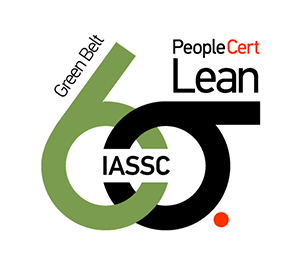We're open through the holidays to support your upskilling goals — Which training do you want to book?
We're open through the holidays to support your upskilling goals — Which training do you want to book?
Unable to find what you're searching for?
We're here to help you find itIASSC® Certified Lean Six Sigma Green Belt™ Course Overview
The Lean Six Sigma Green Belt course is a comprehensive training program designed to equip learners with the tools and methodologies needed to enhance process improvement in their organizations. It merges the Lean principles that focus on reducing waste and increasing efficiency, with the Six Sigma methodology that aims to reduce defects and variability in processes.
The course is structured into five modules, each representing a phase in the Six Sigma DMAIC (Define, Measure, Analyze, Improve, Control) framework. Through the lessons in each phase, participants will gain a deep understanding of Six Sigma, from selecting the right projects to Statistical analysis and maintaining improvements.
With lean green belt training, learners will become proficient at identifying elements of waste, understanding Six Sigma statistics, conducting Hypothesis testing, Designing experiments, and Implementing control plans. The green belt training will empower individuals to lead successful process improvement projects and drive quality advancement in their work environments, making them valuable assets to their organizations.
Purchase This Course
USD
View Fees Breakdown
| Course Fee | 3,250 |
|
Total Fees (with exam) |
3,250 (USD) |
USD
View Fees Breakdown
| Course Fee | 2,500 |
|
Total Fees (with exam) |
2,500 (USD) |
USD
View Fees Breakdown
| Flexi Video | 16,449 |
| Official E-coursebook | |
| Exam Voucher (optional) | |
| Hands-On-Labs2 | 4,159 |
| + GST 18% | 4,259 |
|
Total Fees (without exam & Labs) |
22,359 (INR) |
|
Total Fees (with Labs) |
28,359 (INR) |
Select Time
Select Date
| Day | Time |
|---|---|
|
to
|
to |
♱ Excluding VAT/GST
You can request classroom training in any city on any date by Requesting More Information
Inclusions in Koenig's Learning Stack may vary as per policies of OEMs
Scroll to view more course dates
You can request classroom training in any city on any date by Requesting More Information
♱ Excluding VAT/GST
*Inclusions in Koenig's Learning Stack may vary as per policies of OEMs
Suggestion submitted successfully.
Koenig Learning Stack
Inclusions in Koenig's Learning Stack may vary as per policies of OEMs



